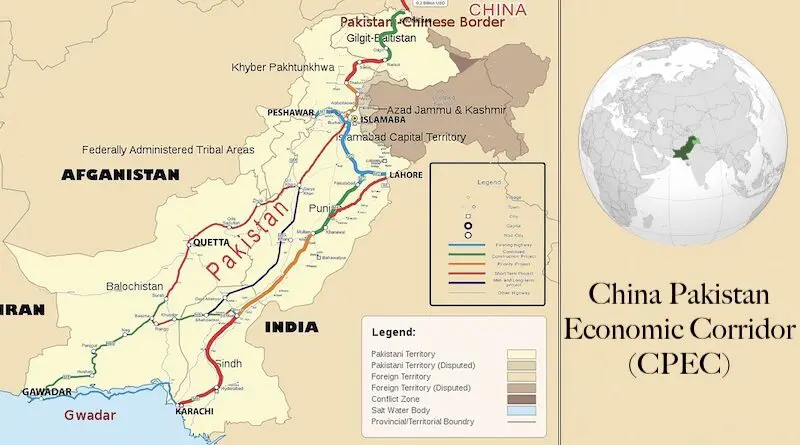Pakistan’s Path to Prosperity Through Strategic Partnership With China – OpEd
Pakistan faces the dilemma of energy shortages, outdated infrastructure, a growing youth population and little technological advancement. But there is hope on the horizon, and that is in these strategic partnerships, most especially, Pakistan’s with China. The deals with China are being heralded as a step towards unlocking the nation’s potential and are being set in motion through projects such as the China Pakistan economic corridor (CPEC). These collaborations are not only changing Pakistan’s economic scene, but also placing Pakistan as a regional powerhouse with the capacity for long-term prosperity.
Formation of strategic partnerships is intrinsically linked to the future of Pakistan. CPEC is the epitome of how bilateral cooperation with the world’s great economic hegemon has brought extraordinary transformation. The idea of collaboration between Pakistan and China does not just end at an economic transaction, in fact, it reflects a common vision of progress and development. This partnership is significant as it transcends the basics of trade for Pakistan; it is about creating a new economic and industrial landscape for Pakistan, revolutionizing the country’s energy sector.
Energy shortages have always been a persistent problem in Pakistan, which have stopped industrial growth and impeded productivity. But due to China’s strategic investments, Pakistan is now ready to skip several stages of development, change the world’s energy supplies and remediate its outdated infrastructure in one gigantic leap. Pakistan, with China’s technological advancements and experiences, has the capacity to bring back its economy, which has already started seeing changes in the similar direction, in the field of energy, with the operation of new power plants, transmission lines, and energy units.
CPEC’s significance goes far beyond infrastructure, it is more than what can be described as an initiative. This is the foundation of thriving Pakistan of which new industries are to be born which will create new jobs and opportunities for Pakistan’s population. Truck and rail transportation on CPEC’s built roads and railways will further enhance transportation. This infrastructure development is helping to fuel the growth of Pakistan’s industries, increasing businesses, creating new jobs, and boosting innovation and entrepreneurship.
The energy revolution of this has the potential to meet the need of Pakistan’s industrial growth which can increase its economic growth and set the pace for a stronger and more diversified economy. Pakistan has built the energy infrastructure it needs to fuel its economic growth, generate jobs, and ascend as an economic powerhouse through China’s investments. Energy sector is the very soul of industrialization and Pakistan’s future entirely relies on the implementation of energy projects under the CPEC framework.
Second, Pakistan’s transformation also involves its education sector. Despite the economic investments, China also has a role in the educational partnership and technological collaborations with Pakistan. With the youth of Pakistan having the keys to its future, China’s investments in education have opened up an unexplored potential. As much as it is true that the future of the country lies in the hands of the young people of the nation, from partnerships with China, Pakistan is positioning itself for the future generation of skilled workers, engineers, entrepreneurs, and innovators. China gives the youth the skills and the knowledge they need to create a pool of human capital that will lead Pakistan’s growth for decades.
The significance of this focus on education will initiate a global shift into a knowledge-based economy. Thus, this emphasis on developing human capital along with the strong industrial base being established through CPEC will be setting up new horizons for future. Pakistan has been admitting China’s technological advancements by modernizing the economy and transforming it into a global economy.
China’s involvement in Pakistan is writing the new rules of growth. It is accelerating industrialization and boosting energy security. As Pakistan enhances its infrastructure, strengthens energy security, and deepens trade relations with major global partners, it is well-positioned to attract increased foreign investment. CPEC has made Pakistan no longer on the periphery of the global trade routes, but rather at the center of them: Central Asia and Pakistan to China; Middle East; and beyond.
Conclusively, Pakistan China partnership is the future of the nation’s development. Initiatives such as CPEC are providing the strategic investments that are turning Pakistan into a regional powerhouse capable of contesting on the global stage. Pakistani localities are not just solving the immediate crises, but are actually inventing new potentials, new chances and a better, brighter and more prosperous future for their people with help from China’s expertise. This is more than a strategic partnership between these two countries, it is the road map to new economic growth and regional prominence.

